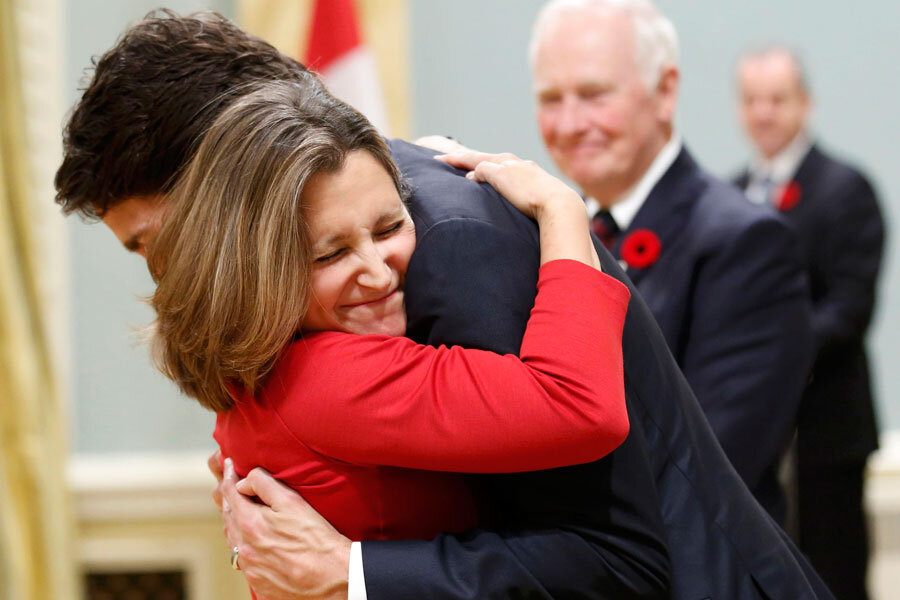Canada's Justin Trudeau: new Prime Minister and ... feminist?
Loading...
Canadian Prime Minister Justin Trudeau made good on his campaign promise of a gender-equal cabinet Wednesday, appointing female candidates to 15 of his 30 cabinet positions.
“Canada has never really had a gender-parity movement before so it’s a big leap for us,” Jonathan Malloy, an associate professor at Ottawa’s Carleton University, tells NBC News. “Canadian politicians often talk about parity while running campaigns but it’s a big deal to actually do it.”
Trudeau’s female cabinet appointments include previous Treaty Commissioner and Regional Chief of the B.C. Assembly of First Nations Jody Wilson-Raybould as justice minister and attorney general, human-rights lawyer Catherine McKenna as environment and climate change minister and prominent academic physician-turned-politican Jane Philpott as health minister. Wilson-Raybould is also the first Aboriginal justice minister in Canada’s history.
“It’s a message to Canadian women – and young women in particular – that this world is about you,” Jean Charest, the former premier of Quebec who put women in half his provincial ministries in 2007, told Bloomberg. “You have to move beyond the old boy’s network.”
But some Canadians have voiced disagreement with Trudeau’s gender-parity appointments, arguing that the Prime Minister should simply pick the best candidates for the job.
Andrew Coyne, a Canadian columnist with the National Post, says the “dominant consideration in choosing a cabinet” should be talent and experience, not gender. Filling a female quota may open up a can of worms, Mr. Coyne says, because “it is impossible to embody the full range of social differentiation in a cabinet of any manageable size, [and] to balance the claims of competing identity groups for scarce cabinet seats.”
Coyne argues that a female quota renders the cabinet ineffective and dispensable. “When a thing is truly important to us – like the national hockey team …we tend to place relatively greater emphasis on merit,” writes Coyne. And “where we have decided an institution is more or less useless,” representationalism (through Trudeau’s female cabinet quota) takes place.
But Trudeau’s supporters disagree.
“The more diverse your organization, your board, or, in this case, cabinet, the more it reflects the realities of the population we are serving, and that can only be a good thing,” Maryam Monsef, the new Liberal leader elected to represent the riding, or district, of Peterborough-Kawartha, told The Huffington Post Canada.
And gender-parity advocates say the female cabinet members should be held to the same standards as their male counterparts.
“These are very strong, able, capable women,” Frances Lankin, who served in three cabinet posts for Bob Rae’s Ontario government, told Metro News. “They will make their mark. Some will soar to the highest heights of competency, recognition and accomplishment – just as some men – and there will be some who turn out not to be so apt at the job – just as some men … If there is any talk of tokenism, it will disappear.”
Trudeau’s appointments signal an improvement in Canada’s gender-equality history. Last year, Canada ranked No. 50 in women’s government representation on the International Parliamentary Union’s list of 190 countries.
The recent appointments move Canada into 3rd place in the world rankings of governmental gender equality, behind only Finland, Sweden and the Atlantic archipelago of Cape Verde (who tie for second place).






